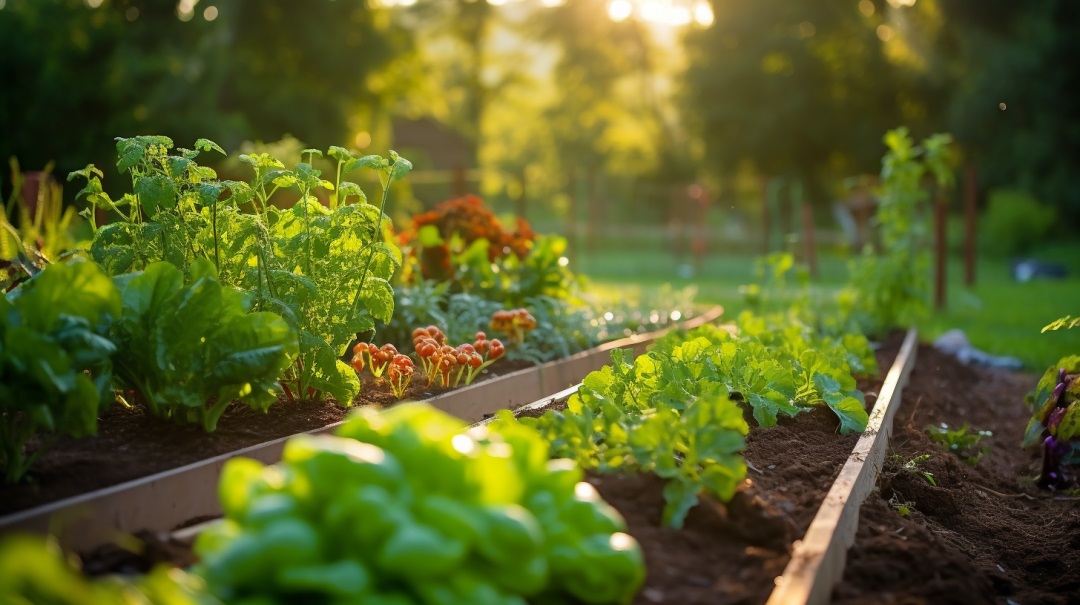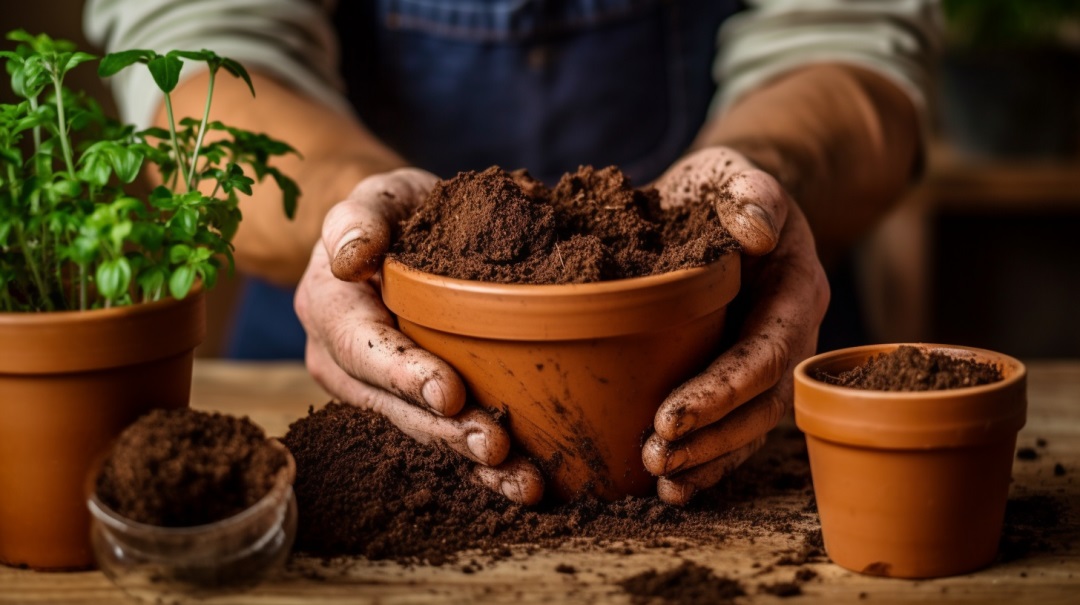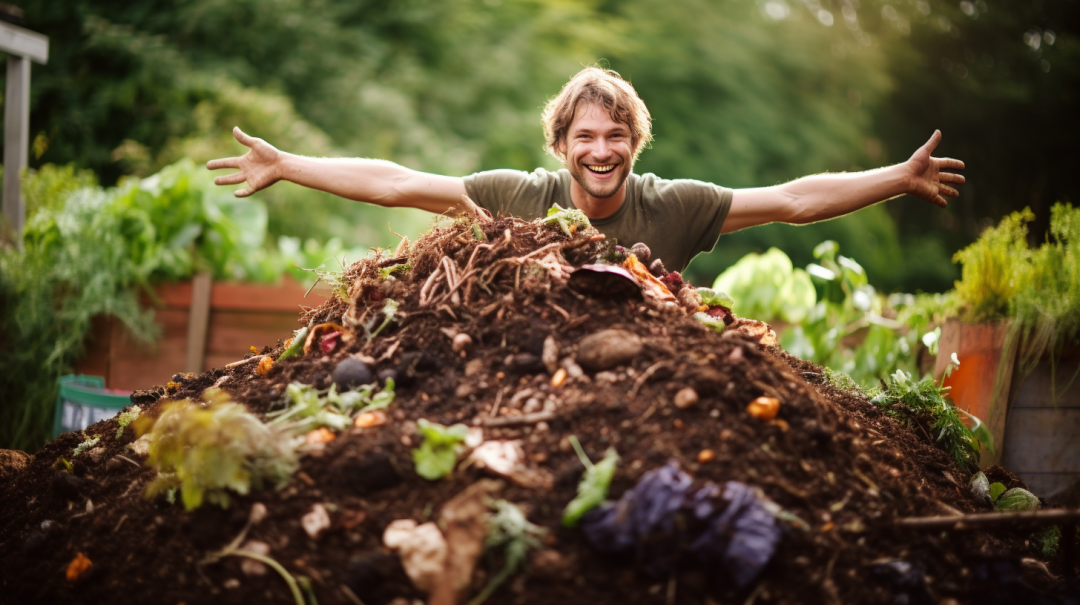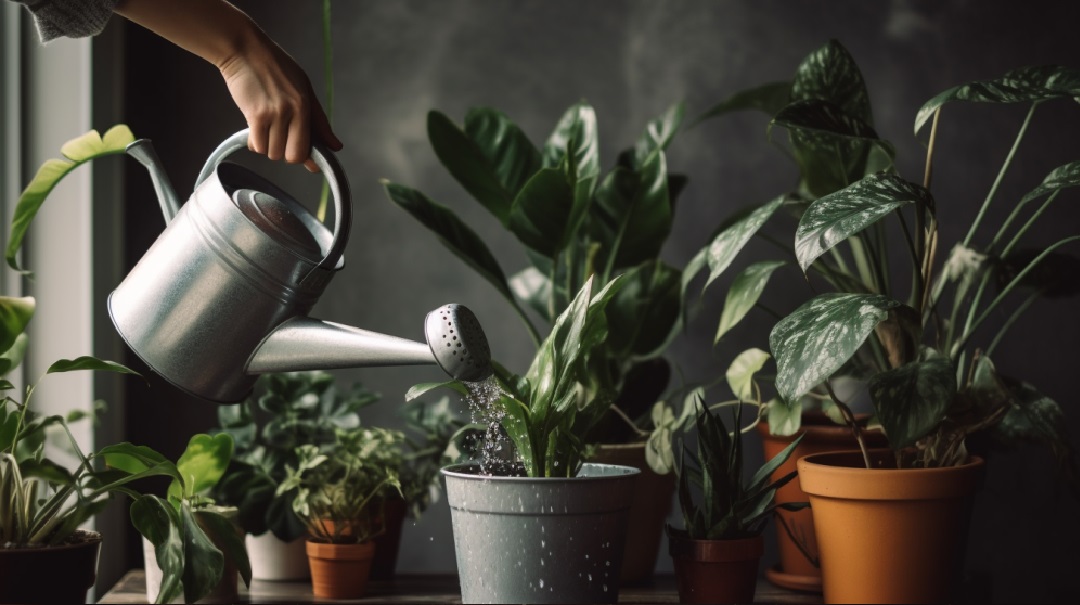Starting your first vegetable garden can seem daunting, but have no fear! Follow this simple beginner’s guide to planning, planting, and maintaining a productive veggie garden right in your backyard.
Choose the Best Location
Choosing the optimal spot is crucial for starting your first vegetable garden off right. Here are key considerations:
- Pick a spot that gets 6-8 hours of direct sunlight daily. Most vegetables need lots of sunlight to thrive.
- Avoid placing the garden under or near trees and shrubs. These cast shade and have competing roots.
- Visit the site different times of day to understand the sunlight patterns. Morning sun is particularly important.
- Existing flower beds already getting sunshine make ideal converted garden space.
- Choose a level site with good drainage to avoid waterlogged soil. Avoid wet, low-lying areas.
Assess Your Microclimate
The specific conditions in your yard create a unique microclimate that impacts plant growth:
- Identify shelter from prevailing winds and frost pockets that increase cold damage risk.
- Consider how buildings, fences, trees and shrubs affect airflow and sun exposure over time.
- Observe how water flows during rains and irrigation to prevent puddling.
Selecting the best location tailored to your microclimate gives vegetables an early advantage.
Test and Improve Your Soil
Building up fertile, nutrient-rich soil gives your vegetables room to stretch out their roots and thrive. Here’s how to prep your beds:
- Remove grass, weeds or mulch from the planned garden area.
- Loosen and break up the top 8-12 inches of soil with a shovel, tiller or garden fork.
- Mix 2-4 inches of finished compost into the soil to enrich nutrition, organic matter, and texture.
- Rake beds smooth to create an even planting surface free of rocks or depressions.
Test Soil pH
Test kits allow you to easily measure your soil’s pH level at home. Most vegetables grow best in the range of 6.0-6.8 pH.
- Test soil early in the season before planting.
- Take samples from several spots around the planned garden.
- Follow test kit instructions carefully for accurate results.
Adjust Soil pH
If test results show your soil pH is outside the ideal vegetable growing range:
- To lower pH (make more acidic), mix in elemental sulfur
- To raise pH (make more alkaline), mix in limestone
- Retest after making adjustments to ensure proper pH before planting
With balanced, fertile soil, your vegetable garden is poised for success!
Plan Out Your Garden Beds
Sketching your ideas on paper helps guide how you’ll lay out your first vegetable garden. Here are some garden design tips:
- Draw shapes and beds to scale. A triangle or kidney shape works for small spaces.
- Place tallest crops on north side to prevent shading shorter vegetables.
- Orient rows east-west for maximum sunlight exposure.
- Design wide beds (3-4 feet across) with walking paths in between. Beds allow easy access.
- Arrange your layout in square or rectangular beds, raised beds, or simple rows depending on your preference.
Map Crop Placements
- Plan crop placements for optimal rotations from year to year. Avoid planting the same crop in the same spot two years in a row.
- Group plants with similar care needs together for efficient watering and harvesting.
- Remember to leave enough space for plants to reach mature size. Drawings help visualize spacing.
Consider Irrigation
Plan out where and how you’ll provide water before planting. Install drip irrigation lines or soaker hoses before beds are planted. Locate spigots and hoses to easily reach all garden areas.
Pick Beginner-Friendly Crops
Choosing suitable crops maximizes your chances of success:
- Focus on 2-3 classic easy crops to start: tomatoes, lettuce, beans, carrots, cucumbers, potatoes, peppers or squash.
- Check seed packets or plant tags for growing information specific to your variety and region.
- Talk to experienced local gardeners to learn which crops grow best in your area.
- Mix fast growing crops like lettuce with longer season plants like tomatoes for a steady harvest.
Some great beginner vegetable varieties include:
- Lettuce: Black Seeded Simpson, Oakleaf, Buttercrunch
- Carrots: Danvers Half Long, Scarlet Nantes
- Beans: Provider Bush, Top Crop Pole
- Tomatoes: Early Girl, Better Boy, Brandywine
- Peppers: California Wonder, Sweet Banana
- Cucumbers: Spacemaster, Lemon
- Squash: Zucchini Black Beauty, Early Prolific Straightneck
- Radishes: Champion, Easter Egg
- Peas: Little Marvel, Sugar Snap
- Beets: Detroit Dark Red, Golden
Know When to Plant
Planting at the right time ensures vegetables thrive in your garden. Here are some tips:
- Consult planting calendars for your hardiness zone to see recommended planting times.
- Sow quick-growing crops like lettuce and radish every 2-3 weeks for continual harvests.
- Start warm weather crops like tomatoes indoors if your growing season is short. Transplant outside after hardening off.
- Stagger plantings over several weeks to prolong harvests of crops like beans and corn.
- Use season extending techniques like cold frames or row covers to add weeks on both ends of the growing season.
Optimal Soil Temperature
Seeds germinate best when soil reaches the ideal temperature range:
- Cool weather crops: 45-75°F
- Warm weather crops: 60-85°F
Use a soil thermometer to be sure the time is right for spring and summer plantings.
Prepare and Plant Seeds
One of the great pleasures of gardening is starting plants from seeds. Here are tips for success:
- Study seed packet information for correct planting depths, spacing, ideal soil conditions and days to sprout.
- Moisten soil before planting. Gently firm seeds into soil with your fingers.
- Label rows with crop name and variety along with the sowing date.
- Cover seeds lightly with seed starting mix or fine soil. Pat gently.
- Water gently after planting. Keep seed beds consistently moist for best germination.
- Consider using row covers to boost warmth, moisture and prevent pest damage.
- Thin overcrowded sprouts for healthy plant spacing once they develop leaves.
Start Seeds Indoors
Get a head start on the season by planting seeds indoors 4-6 weeks before your last frost:
- Use sterile seed starting mix in containers or trays.
- Place under grow lights or in a sunny window.
- Gradually harden off seedlings before transplanting outdoors.
Starting seeds inside extends the growing season earlier in spring.
Support Your Plants
As vegetable plants grow, many benefit from structures that support and lift them up off the ground:
- Install tomato cages, trellises and stakes at planting time or soon after for vegetables that require support.
- Set up structures before plants get large and unwieldy.
- Guide vining crops like beans, cucumbers, peas and tomatoes onto supports as they grow using soft twine or plant ties.
- Allow plenty of headspace above supports so fruit doesn’t drag plants down.
- Use 5-6 foot stakes for larger indeterminate tomato plants.
Supports keep plants tidy, improve yields and make harvesting easier.
Maintain Your Garden
Caring for your vegetable garden along the way results in healthier plants and better harvests:
Watering
- Water when the top few inches of soil become dry. Most veggies need 1-2 inches of water per week from rain or irrigation.
- Consider drip irrigation or soaker hoses to target the soil and reduce water usage.
- Water in morning so plants dry out by night, preventing disease.
- Dig down to check sub-surface moisture and water deeply for better root development.
Weeding
- Weed weekly, especially when plants are young and vulnerable. Competing weeds steal water and nutrients.
- Add 2-4 inches of organic mulch like wood chips, shredded leaves or straw around plants. Mulching suppresses weeds and retains moisture while improving soil health over time. Replenish mulch as needed.
- Pull weeds by hand or use a hoe, cultivator or flame weeder. Weed after rain when soil is moist for easy removal.
Pest Control
- Row covers provide a physical barrier against insects. Use them to protect seedlings.
- Check under leaves for insects and signs of disease. Hand pick or knock pests into soapy water.
- Identify bugs before treating. Many gardeners prioritize supporting beneficial insects whenever possible. As a last resort, use organic, non-toxic pest control measures.
Fertilizing
- Test soil each season and address any nutritional shortages with organic fertilizers like compost, manure, fish emulsion, etc.
- Side dress growing plants with a balanced organic vegetable fertilizer or compost tea.
- Avoid over-fertilizing which can damage plants and soil biology. Follow label rates.
Staying vigilant through consistent care keeps your garden healthy and prevents problems.
Growing Specific Crops
Here are some key tips for successfully growing common beginner vegetables:
Tomatoes
- Start seeds indoors 6-8 weeks before last frost. Harden off and transplant out after danger of frost.
- Space plants at least 24 inches apart. Use cages or stakes to support growth.
- Water regularly at soil level. Use mulch to retain moisture.
- Prune suckers and lower leaves. Remove any diseased foliage promptly.
Leafy Greens
- Direct sow fast-growing lettuces and greens outside in early spring and fall.
- Give plants frequent moisture and harvest leaves within about 60 days.
- Sow new seeds every 2-3 weeks for continual harvests.
- Shade transplants and use row covers if summer heat causes bolting.
Root Crops
- Sow carrots, radishes, beets and turnips directly in garden beds. Thin for proper spacing.
- Loose, rock-free soil helps roots develop smoothly.
- Consistent moisture is key, especially soon after sprouting.
- Cover with fabric row covers to conceal roots from pests.
Beans
- Sow bean seeds 1-2 inches deep in garden beds after danger of frost.
- Space plants 2-4 inches apart in rows or wide blocks.
- Provide supports for vining beans to climb.
- Pick beans frequently to encourage more pod production.
Harvest Time
Your efforts will pay off in bountiful harvests! Follow these tips:
- Check seed packets for days to maturity. Harvest vegetables at their peak ripeness and flavor.
- Pick produce promptly to encourage further production. Leave some root crops in ground and harvest as needed.
- Remove spent plants after final harvest to clear space for successive plantings or new crops.
- Record notes each season on what did well and what didn’t. Evaluate results and start planning next year’s garden improvements!
Storage and Preservation
Enjoy vegetables fresh or preserve the bounty to stock your pantry:
- Store tender crops like lettuce and peas in the refrigerator.
- Freeze or can excess fruits and vegetables.
- Pickle crunchy veggies like carrots, onions, peppers and green beans.
- Dry herbs along with tomatoes, peppers, beans, onions and garlic.
With proper care and attention, beginners can grow thriving vegetable gardens full of healthy, delicious produce! Get ready to enjoy the fruits of your labor.




Leave a Reply